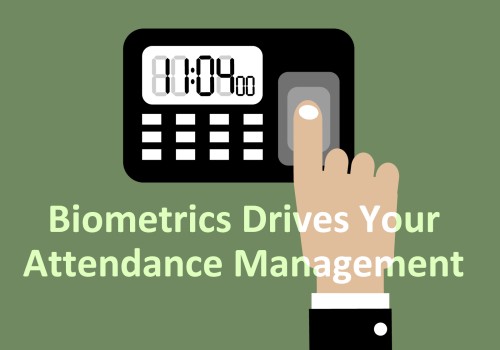On the Part 1, we explained the current problems and suitable biometric modality for attendance management.
This Part 2 features several things that you have to decide to develop or implement biometrics-driven attendance management system, and the way how you consider to deciding those elements.
Storage location of biometric information data
The suitable storage location for biometric information data (template) depends on the scale, scheme or network configuration of corporation or organization that introduces the solution. It would be either of the following four locations:
・Server (External storage)
・Client computer
・Biometric device
・IC card
In most cases for networked environments, the data would be stored in the server. For standalone environments, the general storage location would be client computer or biometric device. If you store the data into the device, you need to pay attention to the safekeeping of device itself.
Though the operation of IC cards takes more cost, it has an advantage to avoid large-scale information leakage by diversification of risks that each user manages their own card. One of the main reasons Japanese major city banks store biometric data into its cash card is for that purpose. However, if each biometric data is too large, it may be difficult to store it into IC card.
Mofiria doesn’t provide a static area to storage template into their device due to security reason. Also, as the size of one template is under 1 kilobyte, it is suitable for storing into IC card.
Authentication Accuracy
Many biometric modalities can adjust the authentication accuracy. For attendance management usage, high accuracy is not necessarily required.
As many employees have common daily time to come and leave office, authentication processes tend to gather to specific time in the morning and the evening. Too high accuracy leads to high FRR (False Rejection Rate), and it might make a long line of employees in front of authentication spots.
Needless to say, low FAR (False Acceptance Rate) is always one of the most important factor. However, for example, a company with 100 employees doesn’t seem to need 0.0001% of FAR for its attendance management. In this case, relatively low accuracy setting may be suitable for smooth operation.
Authentication Method
In this part, ‘authentication method’ means either 1:1 (1 to 1) or 1:N (1 to many). As for the differences between 1:1 and 1:N, please refer to this article. It also depends on the customer’s choice which is more important for them; security or usability.
According to the inquiries related to attendance management reaching Mofiria, it seems that so many customers are hoping 1:N authentication to put their priority on the usability as ‘Just placing a finger without specifying anything’.
However, as Mofiria’s 1:N authentication can support up to 1:1000, when the number of candidate is over 1,000, you need to narrow them down to 1,000 or fewer in advance by specifying some element such as branch name, division name, part of name or so.

Location of Matching Process
The location of matching process would be mainly authentication device, client computer or server computer.
Another candidate is a match-on-card method, which executes matching process inside a chip built in IC card but it is rarely used for attendance management. When an authentication device is the storage location, the matching process is also executed in the device. Otherwise, the location would be decided by various factors including network environment and so on.
When you use mofiria’s vein authentication, your choice is either the device or server but the choice tends to be the device for 1:1 authentication and server for 1:N.
Terminal for Authentication Device
The terminal that authentication device connects to would be PC, tablet computer or specialized terminal. It would be usually decided by the platform that adopted biometric modality supports. In case of PC or tablet computer, Windows is definitely the most frequent used but mobile operating system such as Android or iOS is also often used. In specialized terminals, originally customized OS based on Linux OS such as Ubuntu is sometimes used.
Mofiria can support almost platforms by supporting Windows, Mac OS, Android, Ubuntu and OS independent (RS-232C connection) for client terminal.
In terms of connection method with terminals, it supports USB, Bluetooth and RS-232C.
Others
Some features that we introduced on this blog such as the event notification feature or the cache matching (offline matching) feature can help improving the usability.
Based on the above, develop or enhance your attendance management system with superior usability and security for your customers.
Mofiria is always welcome your questions and/or inquiries. Please feel free to contact us.
Author of this article
 | Tomohiro Yamada mofiria Corporation Senior Sales Manager General Manager in Marketing |



